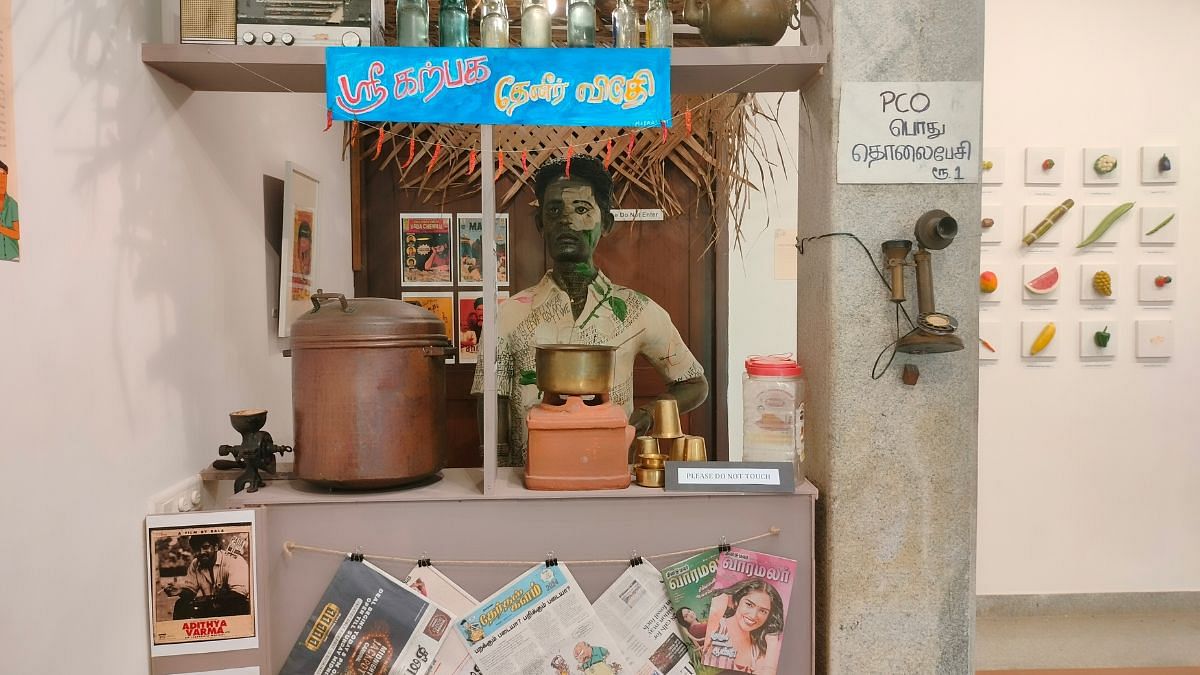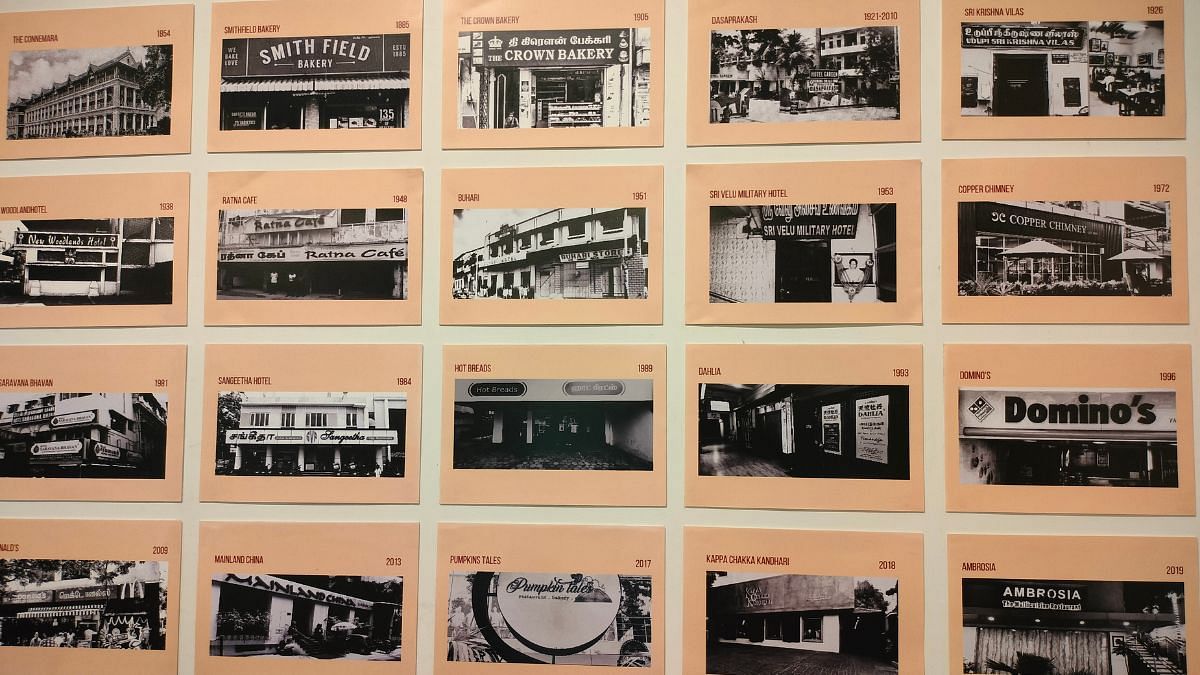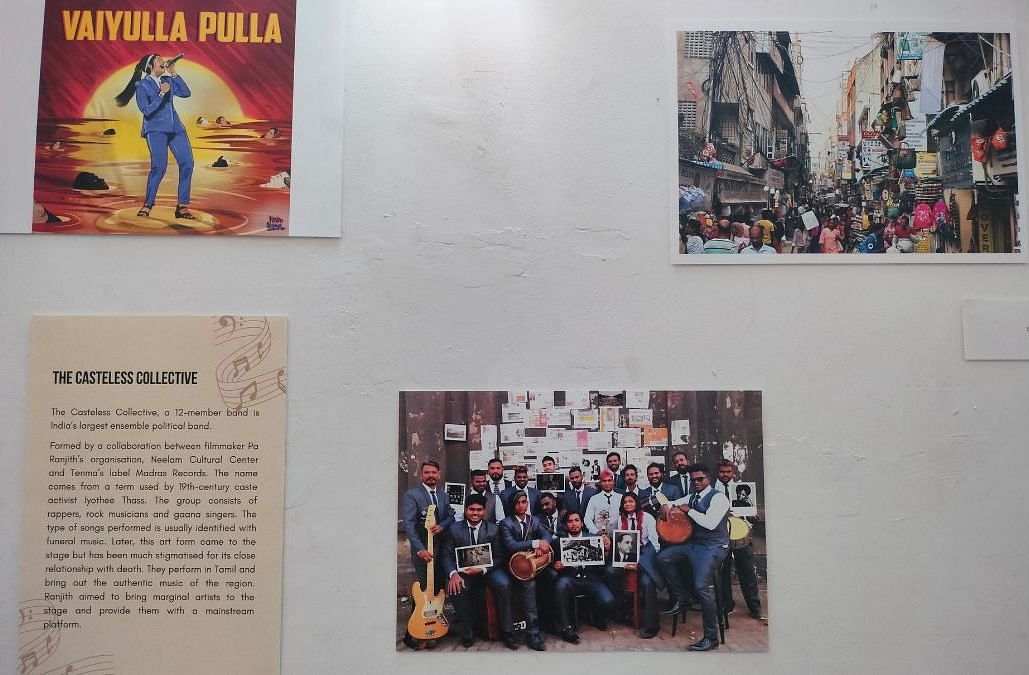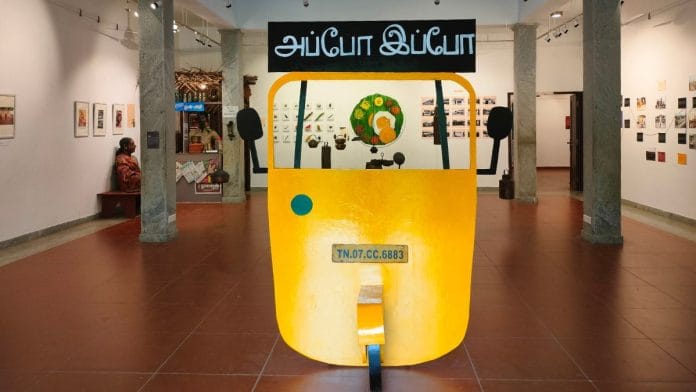Chennai: A yellow auto, a vegetarian thali, Chennai Tamil slang words like mokka, annathe and pista hanging from a blue fish net, and the front page of Periyar’s magazine Kudi Arasu with the headline Veezhka Indhi—Down with Hindi. In the background, a woman and an auto driver are haggling over the fare. This is Chennai—its past and the present—on display at Varija Art Gallery in DakshinaChitra museum on the East Coast Road.
The exhibition, Madras to Chennai: Appo Ippo (Now and Then), is an ode to the city’s journey from its colonial past to the Dravidian present and is on display till 27 May. Curated by seven of the museum’s museology and arts management interns, it captures Chennai’s transformation through the lens of infrastructure, language, culture, food and clothing. Yellow, blue and terracotta are the predominant colours evoking the city’ symbols–its autos, beaches, and Indo-Saracenic buildings.
“It is what Madras gave to the world and what the city has taken from the world,” said 22-year-old exhibit designer Rebecca Tabitha Devesh, one of seven interns. Conceptualising and putting this exhibition together is part of the 11-month internship programme that aims to give them practical knowledge in the field.

They did it without help—from ideation to execution, said museum director Anitha Pottamkulam. The result is a vibrant capsule of a thriving city that wears its rich cultural heritage with casual ease while looking to the future.
Also read: How do you really look at a Tamil Nadu temple? Chennai lecture series is helping
From animal carriages to the metro
Mount Road, one of the city’s landmarks, is barely recognisable in a hazy picture from the 1900s. The Hotel d’Angelis, built by Corsican-Italian hotelier Giacomo D’Angelis back in 1906, stands proud, as an animal traction-carriage passes it by. It was demolished in 2018. The next image on display is an old photograph of Chennai Central Station. A few pictures later the animal carriages pave the way to trams and later to the metro and other automobiles.
The exhibits not only capture a moment in time, but the passage of time. ‘Milestones in Motion’ documents vehicles—from trams and trains to the pink buses in use today.
There are also photos of notable institutions including the Madras School of Art, Madras Medical College, and Madras Christian College.
“There is not much depth to it. But it’s a cool attempt,” said Kiran Watwani, a Chennai resident, as she moves from one exhibit to another.

But for the team behind Madras to Chennai: Appo Ippo, the project was an opportunity to connect with the city.
Except for Devesh and Sujeetha Lakshmanan (25), the rest of the team—Sulaxna Toppo (23), Murcchana Parashar (24), Samreen Zaidi (35), Sarasi Ganguly (25), and Arpit Mash (25)— are not from the city. During the project’s planning phase, which began last October, they chose Chennai because of its connection to the museum itself. Located in Muthukadu, nearly 25 Km away from Chennai, DakshinaChitra is a living history museum that has a finger on Chennai’s cultural pulse.
The group travelled extensively for their research and interviews, and focused on the granular details. They sourced old bus tickets, tracked down archival photos and newspaper clippings, interviewed auto drivers, and spoke to historians, writers and artists.
“People keep talking about what the Madras Presidency was like and how the city is now. It’s a continuous process,” said Ganguly. Her years in Kolkata find some resonance down south in Chennai from its colonial history, infrastructure and even the weather.
Also read: Chennai’s Anna Nagar UPSC hub is mini Mukherjee Nagar of South—it’s cheaper, safer for women
Vada Chennai and Ambedkar
The city’s pop culture and thriving movie industry is captured through exhibits of posters of blockbusters like Avvai Shanmugi (1996) and Vada Chennai (2018).
The Casteless Collective, a hugely popular band founded by filmmaker Pa. Ranjith and music producer Tenma, finds space in this record of Chennai’s history. And in the middle of the exhibit is a portrait of BR Ambedkar.
“For me, the people of north Chennai made this city what it is. And they are still out of the city,” said Lakshmanan, who conceptualised the language and culture section of the exhibition.
Another installation showcased a photo exhibition that had been put together by eight photographers from Vyasarpadi, a neighbourhood in north Chennai. Called ‘Engal Therukal, Engal Kadhaigal’ (Our Streets Our Stories) the photographers wanted to reclaim the narrative of the locality.

North Chennai has been written off as an area of stunted development and a high incidence of crime. It was important for her to tell the story of the people of this region—the settlers, who moved to the city even before the industrialisation began.
“I love this section, it features everything from images of floods to the mundane pictures of children playing in the street and women talking,” said one visitor.
The section also depicts the history of the anti-Hindi agitation covered by Kudi Arasu.
“We are known for protests. Tamil people are very upfront about language and culture. So what is Chennai without its protests?” said Lakshmanan.
(Edited by Theres Sudeep)






